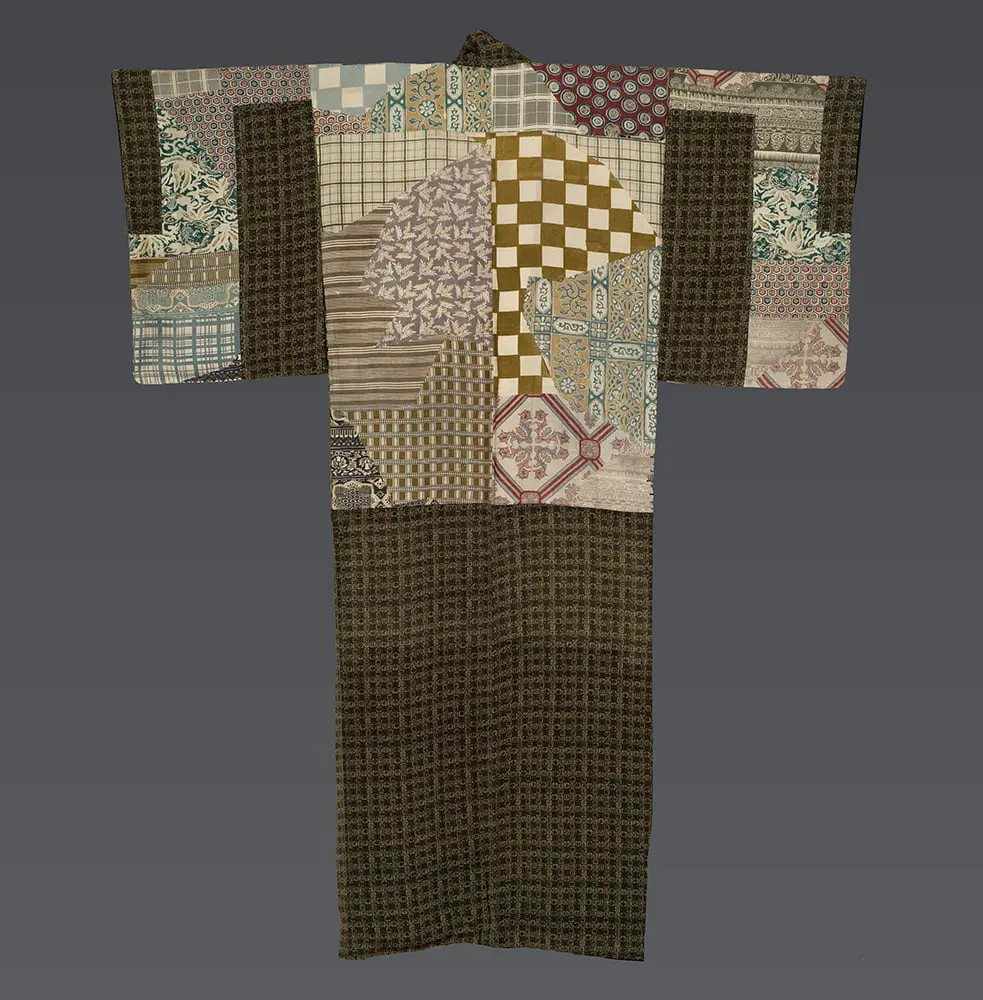This silk dounuki represents a fascinating example of Japanese patchwork aesthetics that prefigures several Western art movements by decades. The bodice, created using the katazome (paste-resist dyeing) technique, displays an extraordinary collage of varied textile patterns (kiredori) arranged in an seemingly random but carefully balanced composition.
The patchwork design strongly anticipates:
Collage and Assemblage - This textile predates Picasso and Braque's revolutionary collage experiments by 30-50 years, demonstrating how Japanese artisans were already exploring the artistic potential of combining disparate visual elements into unified compositions.
Dadaist principles - The apparently random juxtaposition of different patterns - geometric grids, florals, stripes, checks, and traditional motifs - reflects the kind of anti-hierarchical, chance-based aesthetic that Dadaists would later champion.
Postmodern eclecticism - The fearless mixing of high and low patterns, traditional and contemporary motifs, anticipates postmodern art's rejection of stylistic purity and embrace of hybrid forms.
Quilt art movement - This work demonstrates the sophisticated artistic possibilities of textile patchwork that American studio quilters wouldn't fully explore until the 1960s-70s.
The contrast between the busy, eclectic upper section and the restrained chirimen silk pattern below creates a visual dialogue between complexity and simplicity. As an undergarment, this piece reveals how even hidden clothing was treated as an opportunity for artistic expression in Japanese culture, reflecting a holistic approach to design that wouldn't appear in Western fashion until much later.
This dounuki exemplifies the Japanese aesthetic principle of finding beauty in unexpected combinations and the sophisticated understanding of visual rhythm that allowed such disparate elements to coexist harmoniously.
The inner lining is crafted from natural off-white handspun and handwoven tsumugi silk, offering a unique and contrasting texture.
However, there are signs of age, notably old patched wear holes present on both sleeves. Measuring 49 inches (124 cm) from sleeve-end to sleeve-end, it stands at 58 inches (147 cm) in height
.
.avif)







